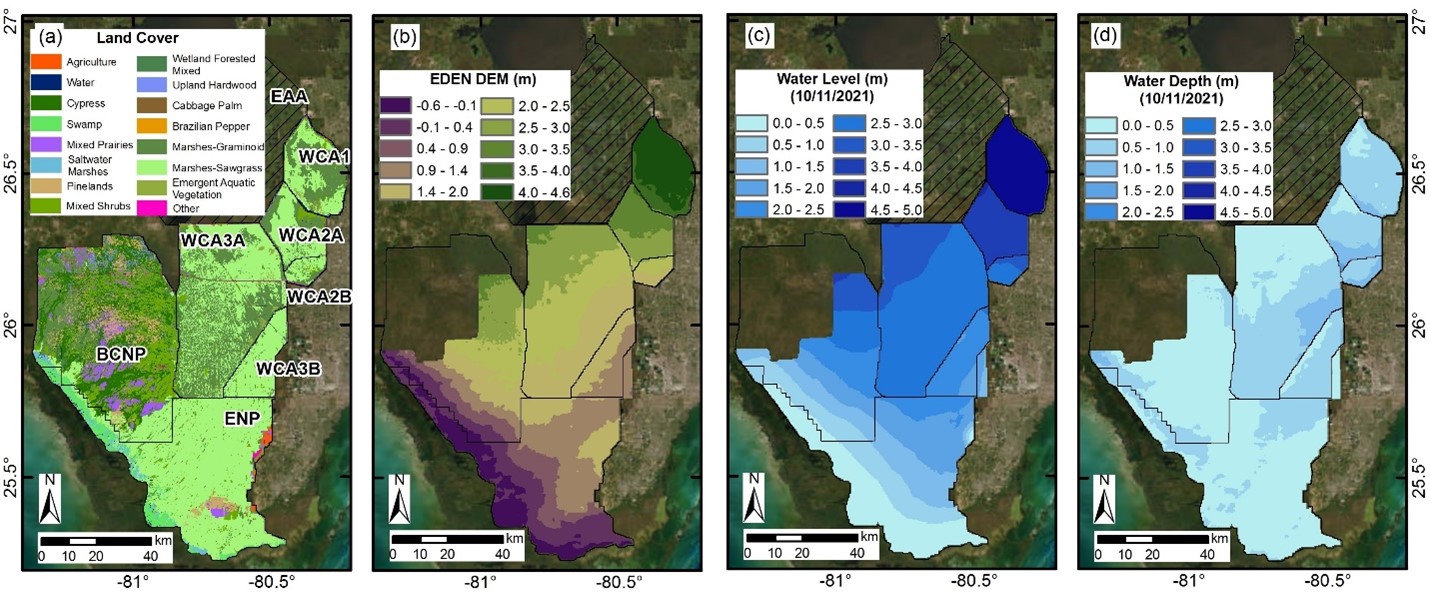Multi-Sensor Monitoring System of Water Levels in Wetlands
Wetlands store roughly 10% of global surface water in the terrestrial portion of the water cycle, cover roughly 9% of the Earth’s surface, and provide critical habitat for a wide variety of plant and animal species. Over the past century, many wetland areas have been lost, degraded, or stressed mainly due to anthropogenic activities, as water diversion, agricultural development, and urbanization, but also in response to natural processes, as sea level rise and climate change. Global and regional monitoring of wetland health and response to their natural and anthropogenic stressors are important and are best conducted using space-based remote sensing techniques, due to wetlands’ vast extent and often inaccessibility.
The research project focuses on remote sensing monitoring of surface water availability in wetlands using a multi-sensor approach that integrates observation from Synthetic Aperture Radar (SAR), optical imagery, radar and laser altimetry, and upcoming missions such as Surface Water Ocean Topography (SWOT) and NISAR when data become available. The multi-sensor system generates detailed multi-temporal maps of wetland inundation extent, water levels, and water level changes.
The multi-sensor monitoring system is being developed over the south Florida Everglades, which can be considered as a natural laboratory due to its variability and the availability of ground-based hydrological observations. After development, the system will be tested in two other wetland areas located in Louisiana, and Peace–Athabasca Delta (Alberta, Canada).

|
Figure 1: Everglades wetland area. (a) Land cover adjusted from the Statewide Land Use Land Cover map from the Florida Department of Environmental Protection; (b) The Everglades Depth Estimation Network (EDEN) Digital Elevation Model (DEM); (c) An example water level map; and (d) An example water depth map for October 11, 2021 from the EDEN water surfaces products. [Source: https://agupubs.onlinelibrary.wiley.com/doi/epdf/10.1029/2023WR035422]
